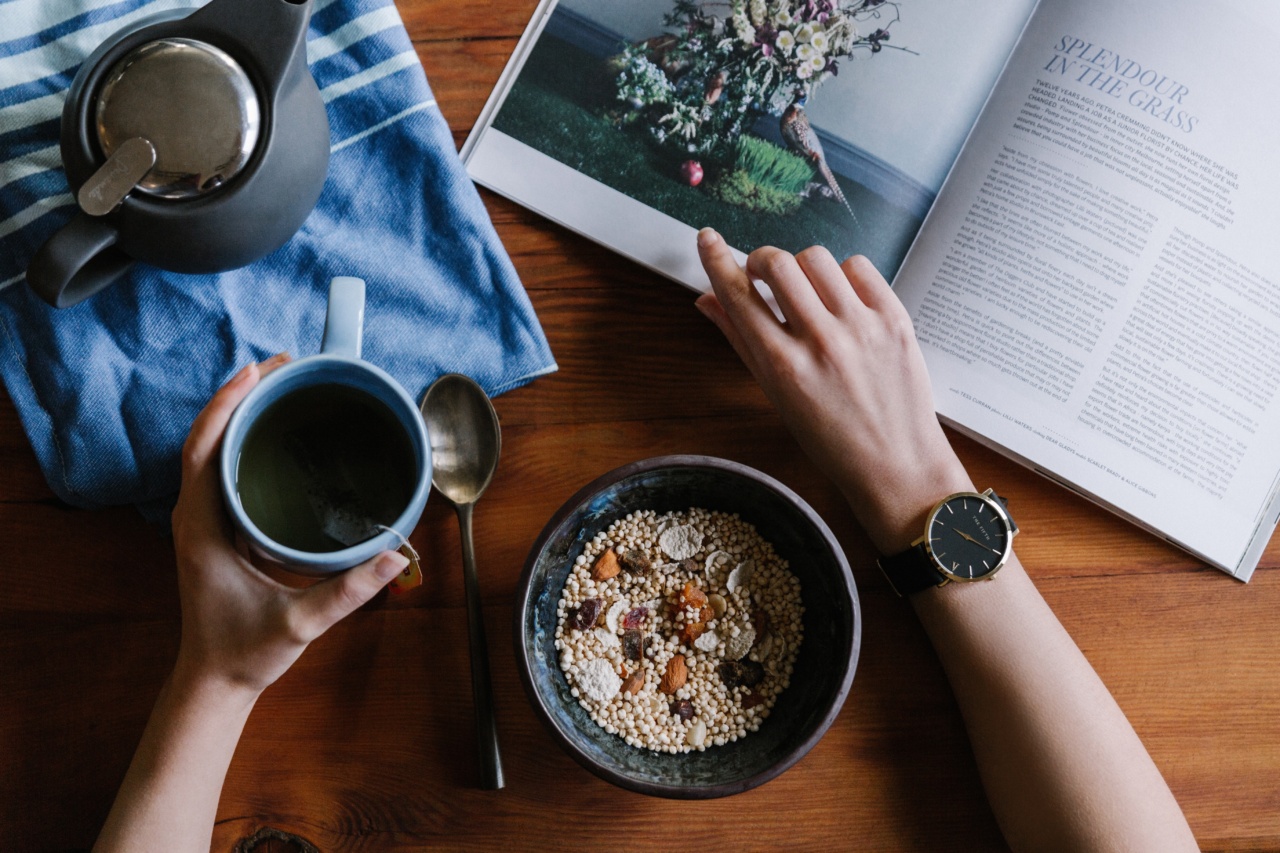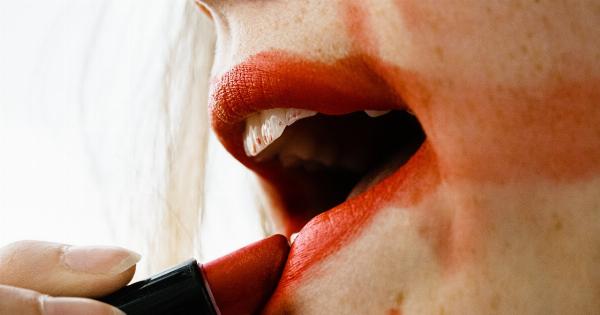Having a bright and beautiful smile is something many people desire. However, maintaining pearly white teeth can sometimes be a challenge, especially with certain foods that are notorious for causing tooth stains.
While it may be impossible to completely avoid these stain-causing culprits, being aware of their effects can help you make better choices for your oral health.
The Science behind Teeth Stains
Before we dive into the list of foods that contribute to teeth stains, let’s understand why and how stains occur in the first place. Teeth stains are mainly categorized into two types: extrinsic and intrinsic stains.
1. Extrinsic Stains
Extrinsic stains occur when the outer layer of the tooth, known as the enamel, is stained by external factors. This type of stain can often be easily removed by practicing good oral hygiene or by visiting your dentist for professional cleaning.
2. Intrinsic Stains
Intrinsic stains, on the other hand, are more challenging to remove as they occur within the tooth structure. These stains may require teeth whitening treatments or other cosmetic dentistry procedures to improve their appearance.
The Culprits: 30 Foods That Cause Teeth Stains
Here are some of the most common foods that are known to cause teeth stains:.
1. Coffee
Coffee is one of the biggest culprits when it comes to teeth stains. Its dark pigments can easily penetrate the enamel, leaving your teeth with a yellowish tinge over time.
2. Tea
Similar to coffee, tea contains tannins that can stain your teeth. Whether it’s black tea or green tea, the pigments can build up and cause discoloration.
3. Red Wine
Red wine not only stains your lips but also your teeth. Its intense color compounds called chromogens can result in stubborn stains that are hard to remove.
4. Cola
Dark-colored sodas like cola contain high amounts of sugar and artificial colorings that contribute to teeth stains. The acidic nature of cola beverages can also erode the enamel, making it more susceptible to stains.
5. Berries
While berries are packed with antioxidants and are beneficial for your overall health, their deep pigmentation can cause tooth discoloration.
6. Tomato Sauce
The bright red color of tomato sauce can leave a lasting impression on your teeth. Its high acidity can also weaken the enamel, making it more prone to staining.
7. Curry
Curry is known for its vibrant yellow or orange color, which can easily stain your teeth. The spices in curry, such as turmeric, can leave behind stubborn stains.
8. Balsamic Vinegar
Balsamic vinegar has a dark color and high acidity, both of which contribute to teeth staining. Using it sparingly or rinsing your mouth afterward can help mitigate the staining effects.
9. Soy Sauce
Soy sauce, commonly used in Asian cuisine, has a dark color that can contribute to tooth discoloration. Its high sodium content can also lead to enamel erosion.
10. Beets
Beets are a nutritious vegetable, but their deep red color can leave stains on your teeth. Enjoy them in moderation to minimize the staining effects.
11. Popsicles
Popsicles and other brightly colored frozen treats often contain artificial dyes that can stain your teeth. Opt for lighter-colored varieties or rinse your mouth after enjoying one.
12. Sports Drinks
Although sports drinks are touted for hydration, their acidic nature and vibrant colors can contribute to teeth staining. Stick to plain water whenever possible.
13. Curry
Curry is known for its vibrant yellow or orange color, which can easily stain your teeth. The spices in curry, such as turmeric, can leave behind stubborn stains.
14. Balsamic Vinegar
Balsamic vinegar has a dark color and high acidity, both of which contribute to teeth staining. Using it sparingly or rinsing your mouth afterward can help mitigate the staining effects.
15. Soy Sauce
Soy sauce, commonly used in Asian cuisine, has a dark color that can contribute to tooth discoloration. Its high sodium content can also lead to enamel erosion.
16. Beets
Beets are a nutritious vegetable, but their deep red color can leave stains on your teeth. Enjoy them in moderation to minimize the staining effects.
17. Popsicles
Popsicles and other brightly colored frozen treats often contain artificial dyes that can stain your teeth. Opt for lighter-colored varieties or rinse your mouth after enjoying one.
18. Sports Drinks
Although sports drinks are touted for hydration, their acidic nature and vibrant colors can contribute to teeth staining. Stick to plain water whenever possible.
19. Citrus Fruits
Citrus fruits are highly acidic, and their juices can erode the enamel, making your teeth more susceptible to stains. Brushing your teeth after consumption can help mitigate the effects.
20. Dark Chocolate
While dark chocolate offers various health benefits, its deep pigment can stain your teeth. Opt for white chocolate or rinse your mouth afterward to minimize staining.
21. Refined Sugar
Foods high in refined sugar, such as candies and sweets, contribute to plaque buildup and tooth decay. The sticky residue left behind by these sugary treats can also lead to stains.
22. Pomegranates
Pomegranates are known for their vibrant red color and can cause tooth stains. Enjoy them in moderation and rinse your mouth afterward.
23. Popcorn
Popcorn can get stuck between your teeth, promoting bacterial growth and leading to stains. Make sure to floss thoroughly after enjoying this tasty snack.
24. Blackberries
While blackberries are packed with antioxidants, their dark pigmentation can leave stains on your teeth. Remember to rinse your mouth or brush shortly after consuming them.
25. Ice Pops
Similar to popsicles, brightly colored ice pops can stain your teeth due to their artificial dyes. Opt for lighter-colored options or rinse your mouth afterward.
26. White Wine
Although red wine is famous for staining teeth, white wine is not entirely innocent. Its acidic nature can erode the enamel, making your teeth more prone to stains from other sources.
27. Energy Drinks
Energy drinks contain high amounts of sugar, acidic components, and artificial dyes that can lead to teeth stains. Limit your consumption to protect your dental health.
28. Curry
Curry is known for its vibrant yellow or orange color, which can easily stain your teeth. The spices in curry, such as turmeric, can leave behind stubborn stains.
29. Balsamic Vinegar
Balsamic vinegar has a dark color and high acidity, both of which contribute to teeth staining. Using it sparingly or rinsing your mouth afterward can help mitigate the staining effects.
30. Soy Sauce
Soy sauce, commonly used in Asian cuisine, has a dark color that can contribute to tooth discoloration. Its high sodium content can also lead to enamel erosion.
Protecting Your Smile: Tips to Minimize Teeth Stains
While it’s nearly impossible to completely avoid these stain-causing foods, there are steps you can take to minimize their impact on your smile:.
1. Brush and floss regularly
Practicing good oral hygiene by brushing at least twice a day and flossing daily can help remove plaque and prevent stains from settling on your teeth.
2. Rinse your mouth
Rinsing your mouth with water or an alcohol-free mouthwash after consuming stain-causing foods can help wash away some of the pigments and reduce stains.
3. Drink through a straw
Using a straw while consuming beverages can help minimize contact between the staining liquids and your teeth.
4. Limit consumption
Enjoying stain-causing foods and beverages in moderation, rather than indulging in them frequently, can help reduce the chances of tooth discoloration.
5. Visit your dentist
Regular dental check-ups and professional cleanings can help remove stubborn stains and keep your teeth in optimal health.
Conclusion
While there are multiple factors that contribute to teeth staining, being mindful of the foods and beverages you consume can go a long way in maintaining a radiant smile.
Following good oral hygiene practices and seeking professional dental care when needed will help keep your teeth healthy and stain-free.





























